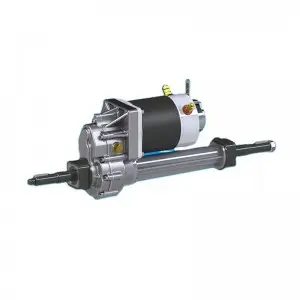The field of automotive engineering is full of complicated terminology that often intimidates even the most seasoned car enthusiast. One such term is the transaxle transmission, which is a key component that plays an important role in the function of the vehicle. In this blog, we’ll take a deep dive into the transaxle gearbox, demystify it, and gain a better understanding of its importance in the automotive world.
What is a transaxle gearbox?
A transaxle transmission is a combination transmission and differential. It is mainly used in front-engine, front-wheel drive vehicles as well as mid-engine and rear-engine cars. Unlike conventional drivetrains, where the transmission and differential are separate components, a transaxle transmission combines both functions into a single unit. This unique design offers numerous advantages in terms of weight distribution and overall vehicle performance.
Structure and components:
A transaxle transmission is made up of several key components, all working in harmony to transfer torque from the engine to the wheels. The basic structure includes gearbox housing, clutch assembly, input shaft, output shaft, differential and final drive. The housing encapsulates all the components and provides support, while the clutch pack engages and releases the engine’s power. The input shaft receives rotational energy from the engine and transfers it to the output shaft. The differential helps distribute power between the wheels for smooth cornering while maintaining traction. Finally, final drive gears play a key role in modulating torque to suit the vehicle’s speed and load requirements.
Advantages of transaxle gearboxes:
One of the main advantages of a transaxle gearbox is its weight distribution. By combining the transmission and differential into one unit, the vehicle’s weight can be evenly distributed over the front and rear axles. This helps improve handling, stability and overall performance. Additionally, a transaxle gearbox is typically more compact than a separate gearbox and differential unit, allowing greater design freedom and maximizing the space available within the vehicle.
Application and significance:
Transaxle transmissions are found in a wide variety of vehicles, including sports cars, sedans and mid-engined supercars. Its unique design allows for optimal engine placement for improved balance and weight distribution. This configuration is particularly beneficial for front-wheel-drive vehicles, as it simplifies the drivetrain layout and reduces overall complexity, increasing efficiency and cost-effectiveness.
While the term “transaxle transmission” may seem daunting at first, it’s worth exploring its importance in the automotive world. This innovative assembly combines the functions of a transmission and differential to provide enhanced weight distribution, improved handling and greater design flexibility. Whether you’re a car enthusiast or just curious about how complex vehicles work, understanding transaxle transmissions brings a whole new dimension to the field of automotive engineering.
Post time: Aug-04-2023


